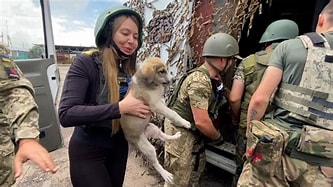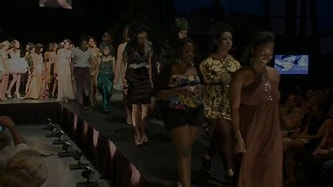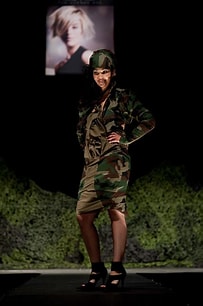From Catwalks to Battlefields
Introduction
Fashion is a powerful form of expression, often reflecting societal values, cultural shifts, and historical events. One of the most intriguing influences on contemporary fashion comes from the military. From the tailored silhouettes of military uniforms to the bold patterns of camouflage, military aesthetics have significantly shaped civilian clothing over the years. In this article, we’ll explore how military fashion has evolved from historical periods to modern trends, examining the symbolism and cultural significance behind these styles.
The Historical Roots of Military Fashion
The Origins of Military Uniforms
Military uniforms have been around for centuries, serving as symbols of authority and discipline. They were designed not only for functionality but also to instill a sense of pride and unity among soldiers.

Early Examples
- Ancient Rome: Roman soldiers wore tunics and armor that signified their rank and unit.
- Medieval Europe: Knights donned armor adorned with family crests, showcasing their lineage and allegiance.
The Evolution Through the Ages
As warfare evolved, so did military attire. The introduction of standardized uniforms in the 17th century marked a significant change in how soldiers dressed.
The Napoleonic Era
During the Napoleonic Wars, uniforms became more elaborate, featuring bright colors and intricate designs. This period emphasized not only functionality but also visual appeal, influencing civilian fashion.
Military Influence on Civilian Clothing
World War I: A Turning Point
The First World War brought about significant changes in both military and civilian fashion. Soldiers’ need for practicality led to innovations that would later seep into everyday wear.
The Rise of Utility Clothing
- Trench Coats: Originally designed for soldiers in the trenches, trench coats became fashionable civilian attire after the war.
- Khaki Pants: The use of khaki in military uniforms popularized this color in casual wear.
World War II: Fashion Meets Functionality
World War II further solidified the connection between military and civilian fashion. Rationing during this time led to a focus on practicality and durability.
Iconic Styles from WWII
- Bomber Jackets: Worn by pilots, these jackets became symbols of rebellion and coolness in post-war fashion.
- Military Boots: Sturdy footwear designed for soldiers transitioned into everyday wear, influencing styles that endure today.

Camouflage: From Battlefield to Catwalk
The Origins of Camouflage Patterns
Camouflage was developed during World War I as a means to conceal troops and equipment from enemy forces. Its effectiveness led to widespread adoption across various military branches.
Transition to Fashion
By the late 20th century, camouflage patterns began appearing in civilian clothing. This shift was influenced by cultural movements that embraced rebellious aesthetics.
Camouflage in Contemporary Fashion
Today, camouflage is a staple in streetwear and high fashion alike. Designers have reinterpreted this pattern in innovative ways:
- Runway Shows: High-profile designers like Balenciaga and Vetements have incorporated camo into their collections.
- Casual Wear: Brands like Supreme and Off-White have made camouflage a trendy choice for casual outfits.
Tailored Silhouettes: Military Precision Meets Fashion
The Influence of Tailoring
Military uniforms are known for their precise tailoring, which creates sharp lines and structured looks. This emphasis on fit has significantly influenced modern fashion.
The Power Suit
The power suit emerged as a symbol of professionalism in the corporate world. Its structured silhouette draws inspiration from military tailoring, representing authority and confidence.

Modern Tailoring Trends
Today’s fashion continues to embrace tailored silhouettes inspired by military aesthetics:
- Double-Breasted Blazers: These blazers echo the structured designs seen in military uniforms while offering versatility for both men’s and women’s fashion.
- Structured Coats: Overcoats with military-inspired cuts provide warmth while maintaining a polished appearance.
Cultural Significance of Military Fashion
Symbolism Behind Military Attire
Military clothing often carries deep symbolism related to honor, sacrifice, and duty. Wearing such styles can evoke feelings of respect for those who serve or have served.
National Pride
In many countries, military uniforms are associated with national pride. Events like Veterans Day or Memorial Day often see civilians donning military-inspired attire as a sign of respect.
Fashion as Protest
Military aesthetics have also been used as forms of protest against war or militarism. Designers sometimes repurpose military garments to critique societal norms or express dissent.
The Impact of Military Fashion on Subcultures
Punk and Military Aesthetics
The punk movement of the 1970s embraced military styles as part of its rebellious identity. Combat boots, camouflage patterns, and army jackets became staples among punk rockers.
DIY Culture
Punk culture encouraged individuals to modify their clothing creatively. This included adding patches or spikes to military-inspired garments, making them unique expressions of personal identity.
Hip-Hop Influence
In the 1980s and 1990s, hip-hop culture adopted military aesthetics as well. Artists wore camo pants and bomber jackets, blending style with statements about resilience and strength.
The Global Influence of Military Fashion
Worldwide Adoption
Military-inspired styles are not confined to any one region—they’ve been embraced globally:
- Africa: Camouflage is often worn by civilians as a symbol of resistance against colonialism.
- Asia: Countries like Japan have incorporated military aesthetics into street fashion, blending traditional elements with modern flair.
Cross-Cultural Collaborations
Fashion designers worldwide frequently draw inspiration from various cultures’ military histories—creating unique blends that celebrate diversity while honoring heritage.
Future Trends in Military Fashion
Sustainable Practices
As awareness around sustainability grows within the fashion industry, we may see an increase in eco-friendly materials used for military-inspired clothing—reflecting a shift towards responsible consumption without sacrificing style!
Technology Integration
With advancements in technology influencing all aspects of life—including fashion—we might witness innovative designs incorporating smart textiles or functional elements inspired by modern militaries!
Conclusion: A Tapestry Woven with Threads of History
From battlefields to catwalks, military influence on fashion is undeniable! This rich tapestry weaves together stories about power authority resilience creativity throughout history—showcasing how garments can transcend their original purposes while adapting over time!
As we explore these fascinating intersections between style warfare let us remember their importance—not just as symbols—but also reminders about our shared human experience! Together we can work towards ensuring that our future embraces diversity creativity compassion!
FAQs
1. How has military fashion influenced civilian clothing?
Military fashion has influenced civilian clothing through elements like tailored silhouettes, camouflage patterns, and functional designs adopted from uniforms used by armed forces over time!
2. What role does camouflage play in contemporary fashion?
Camouflage serves as both a trendy pattern within streetwear high-fashion; it symbolizes rebellion while maintaining versatility across various styles—from casual outfits to runway looks!
3. Are there any notable designers who incorporate military aesthetics?
Yes! Designers such as Balenciaga Vetements have famously integrated militaristic elements into their collections—showcasing how these influences continue shaping modern trends!
4. How do subcultures utilize military-inspired styles?
Subcultures like punk hip-hop adopt military aesthetics as forms of expression; they often modify garments creatively (e.g., adding patches) while using them symbolically within their identities!
5. What future trends can we expect regarding military influence on fashion?Future trends may include sustainable practices utilizing eco-friendly materials alongside technological advancements integrating smart textiles into designs inspired by modern militaries!

